Future Continuous at Heimtextil 2025
Heimtextil wastes no time in jump-starting the textile industry into the New Year, with an international showing of domestic and contract textiles in the vast halls of Frankfurt Messe, Germany.
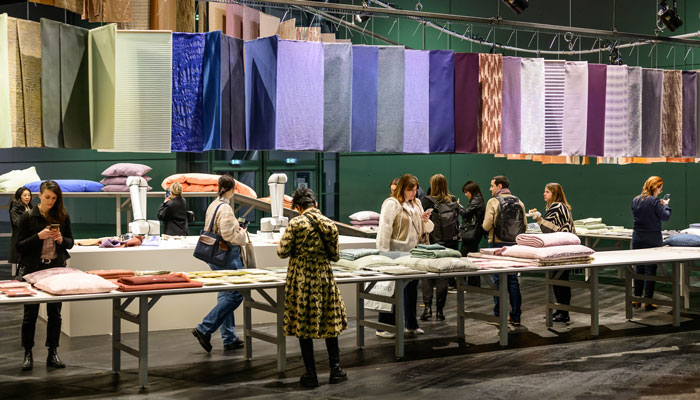
Taking place between 14-17th January, the event returned larger than ever, with 3,000 exhibitors from 142 participating nations showcasing their wares to over 50,000 visitors, which it’s reported included a 10% rise in sales from last year’s show. That’s no mean feat when considering the findings of a pre-show study by IFH for Messe Frankfurt which outlines that, “Consumers are becoming increasingly selective and weigh things up carefully before making a purchase decision. When they decide in favour of a product, it must be convincing in all areas: durable, high quality – but also sustainable.”
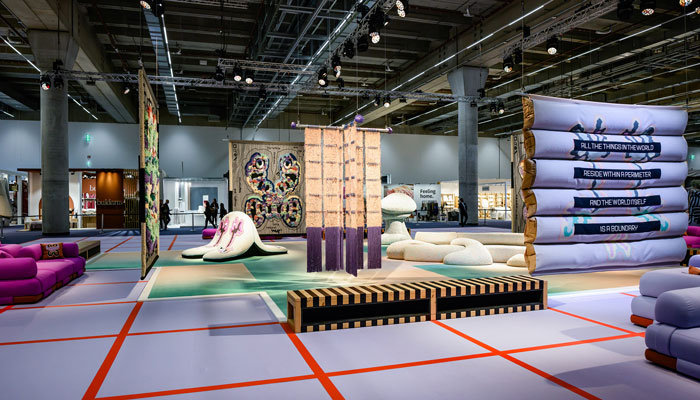
Across the 12 halls, those consumers were welcome to explore myriad sections including Wall, Window and Interior Decoration, Carpets & Rugs, Decorative & Furniture Fabrics, and Global Home Select, which encompassed Country Pavilions. This year Designer and architect Patricia Urquiola was invited to create the eye-catching among-us installation-cum-meeting place. While visually stimulating, the multi-faceted space represented a functional textile environment in which fabric was used to create wall hangings, carpets, sculptures and seating that open the potential of textile-based solutions in interior settings, not least retail and hospitality sectors.
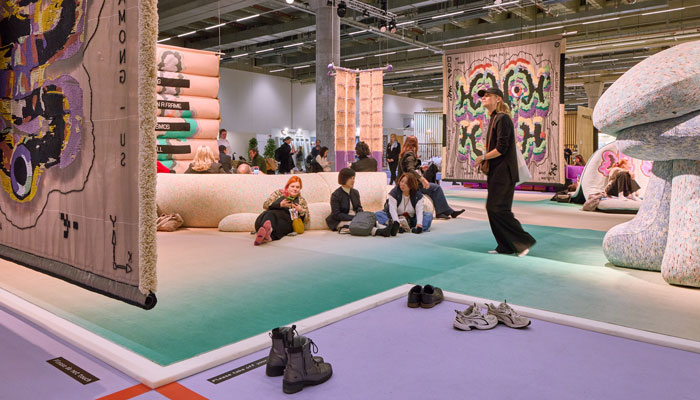
With such a broad array of textile disciplines under one roof, the organisers continue to invite industry experts to identify and weave together digestible themes with Heimtextil Trends 25/26. Milanese design platform Alcova took the reins this year, building on their experience at Milan Design Week, Dutch Design Week and London Design Festival. Future Continuous introduces 3 visionary themes, Naturally Uneven, Radically Restructured, and Regenerative, and is intended to highlight the far-reaching significance of textiles, and their central role in technological, cultural and ecological developments. Set against a backdrop of persistent inflation, low purchasing power, and high consumer demand for long-lasting and ethically produced products, the Alcova team rather wisely opened their research to others within the industry. Conducting 6 in-depth interviews with the likes of designer and researcher Eugenia Morpurgo, Euratex Director Dirk Vantyghem and designer and educator Ilse Crawford.
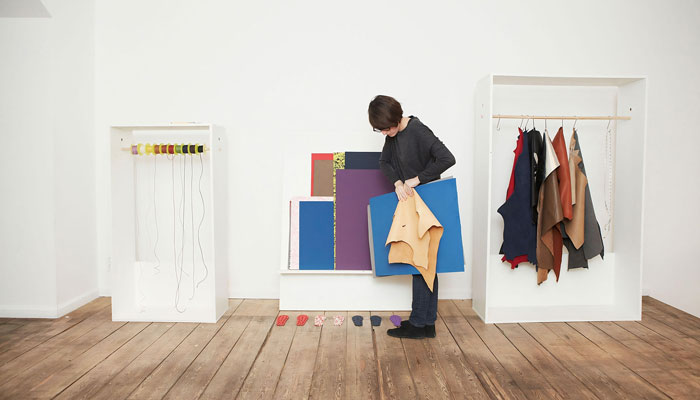
Each participant offered their unique insights and colour selections for the year to come, highlighting the significance of natural fibres, transparent supply chains, circular practices and the democratising of making, as well as more robust assessments of what it means to be ‘sustainable’, as Morpurgo explains:
“When evaluating the sustainability of a textile or fashion product, we often focus narrowly on the productivity per square metre, measuring output by the quantity of spun yarn. This approach, however, overlooks crucial factors. We must consider the ‘true costs’: the water and fertilise used, labour conditions and wages, transportation impacts and long-term soil productivity. If the soil is depleted after 20 years, what are the costs of this degradation and the related damages to its ecosystem?”
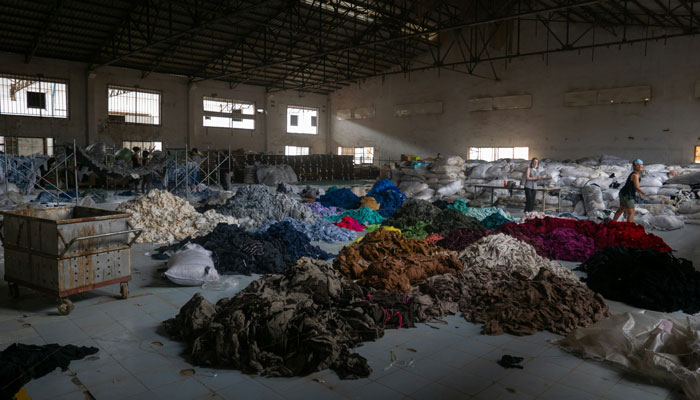
In a fast-paced and digital world dominated by screens and in which our products tend to be manufactured via automated processes, there is a risk of diminishing consumer’s connection or sense of value to the things they own. Led by the thinking of Crawford and Salewa Innovation Manager, Christine Ladstätter, the Naturally Uneven trend strives to be the antidote to this growing sense of disembodiment in recognising the intrinsically tangible and physical nature of textiles. Natural fibres such as hemp, flax, jute and nettle and pushed to the fore and celebrated for their organically uneven and tactile qualities.
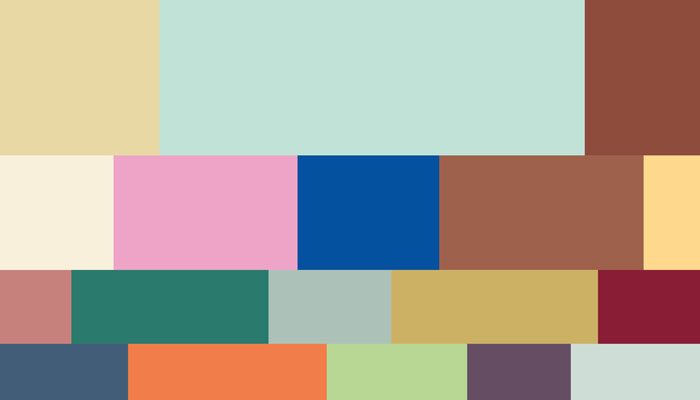
While long appreciated for their comfort and durability, this also feels like a timely reminder of the craftsmanship and cultural heritage of such textiles, and indeed the people involved in their creation. Ladstätter underlines another unseen but equally significant element of working with such fabrics in emphasising the use of local agriculture in the cultivation of the crops. Of course, this is not a novel idea, but rather an opportune return to a long-view form of production in which contract furnishings can help to preserve the pastoral landscapes from which they are derived. Here the colour palette conjures shades of natural stone and fibres while offering a subtle and timeless quality.
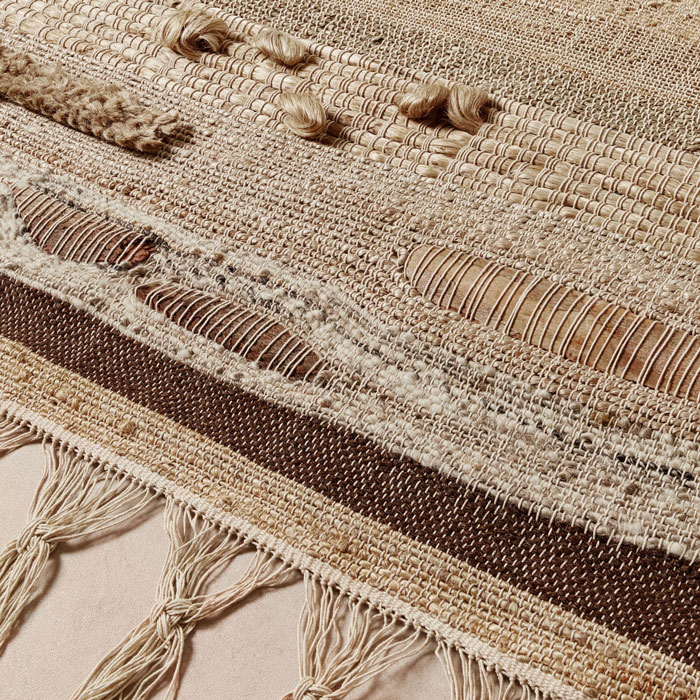
In contrast, Radically Restructured explores the convergence of innovation and sustainability, with a narrative that shows how advanced technology and environmentally conscious design can work in unison. The emphasis here is on recycled materials that serve to minimise the consumption of raw materials and reuse existing resources, along with the processes that help to create this new lease of life, such as 3D weaving, digital printing and laser cutting. The colour selection notably includes rich blues and greens with rather hopeful names such as End of Petrol and New Green Deal. Here the organisers seek to add weight to the European Parliament’s campaign to weed out greenwashing and create genuine traceability in the supply chain of goods and with it, promote the textiles industry as a leader of the European Green Deal, which seeks to make the EU climate neutral by 20250.
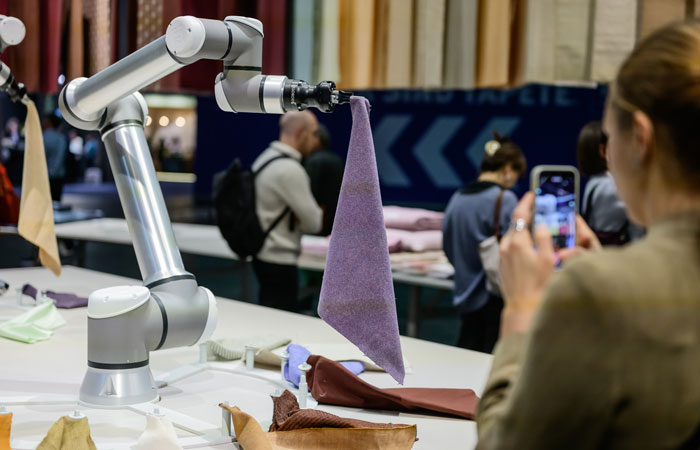
As the title suggests, Regenerative goes one step further and embodies the principles of renewal, growth and circularity, with a mix of natural, recycled and bio-based fibres. The spotlight was also shone on open and co-creative production methods, as championed by WAAG Future Lab members Simone van der Burg and Lucas Evers. Once again, local provenance of raw materials such as dyes and fibres is prioritised, which along the democratisation of open source processes further opens the potential for locally sourced and produced textiles. This includes new developments in biomaterials created in the TextileLab, led by Cecilia Raspanti.
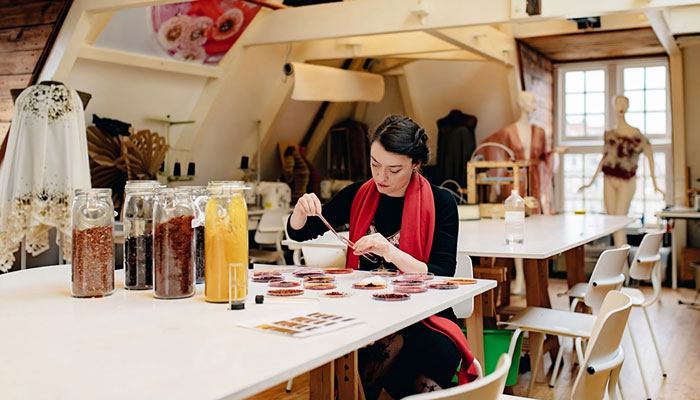
Building on her research at WAAG, Simone van der Burg posits that the textile industry may be able to learn from the “short value chain” theories regarding food consumption, in which consumers purchase increasingly more locally sourced produce and circumnavigate the hegemony of supermarkets. In doing so, farmers have autonomy in how and when they produce crops as well as in how they share the data about them with consumers. By applying the same system to textile crops, the WAAG team argues that the value chain would become more transparent and traceable, thus allowing consumers to make more informed and sustainable choices when choosing their textiles and associated products.
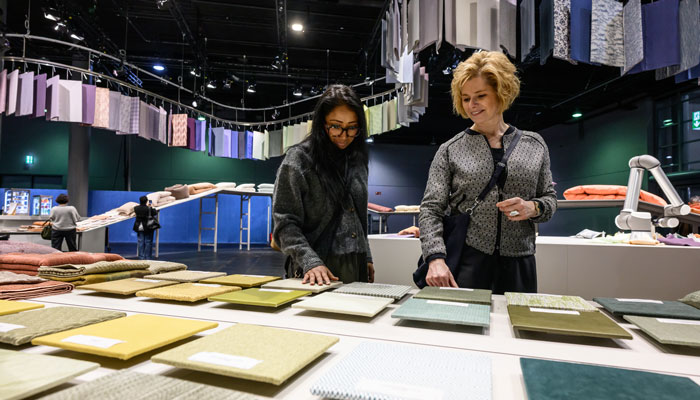
The Regenerative colour palette very directly references the core themes of the narrative with shades including Regenerative Azure and Repairable Green and once again helps to poignantly capture the mood of the trend stories.
Collectively they remind us that textiles have long been entwined in our history and culture, and have the capacity to holistically enrich and improve the future narrative of production and functionality. An emerging future with a long-view approach in which, “the focus of a new, sustainable way of thinking (moves) away from pure ‘recycling, reducing and reusing’ towards regenerative agriculture and a vocabulary that speaks of ‘restoring, renewing and replenishing’.”
For more information about this years Heimtextil Trends and to discover what’s to come in 2026 visit www.heimtextil.messefrankfurt.com
Images courtesy of Heimtextil




